Seven
SNOWFLAKES AND HEADSTONES

Traveling down Main Street past Aliso Street is a tree-filled park, though it is not really a park. Locals call it Cemetery Park because it is the old city cemetery that saw its first burial back in 1862 with the interment of Ynez Sanches. It was divided into four parts: Catholic, Protestant, Jewish, and an area for Chinese, Native Americans, and other races. The last burial took place in 1941, and the cemetery was abandoned. However, what happened in 1964 resulted in a controversy that exists to this day. (Courtesy Dena Mercer.)
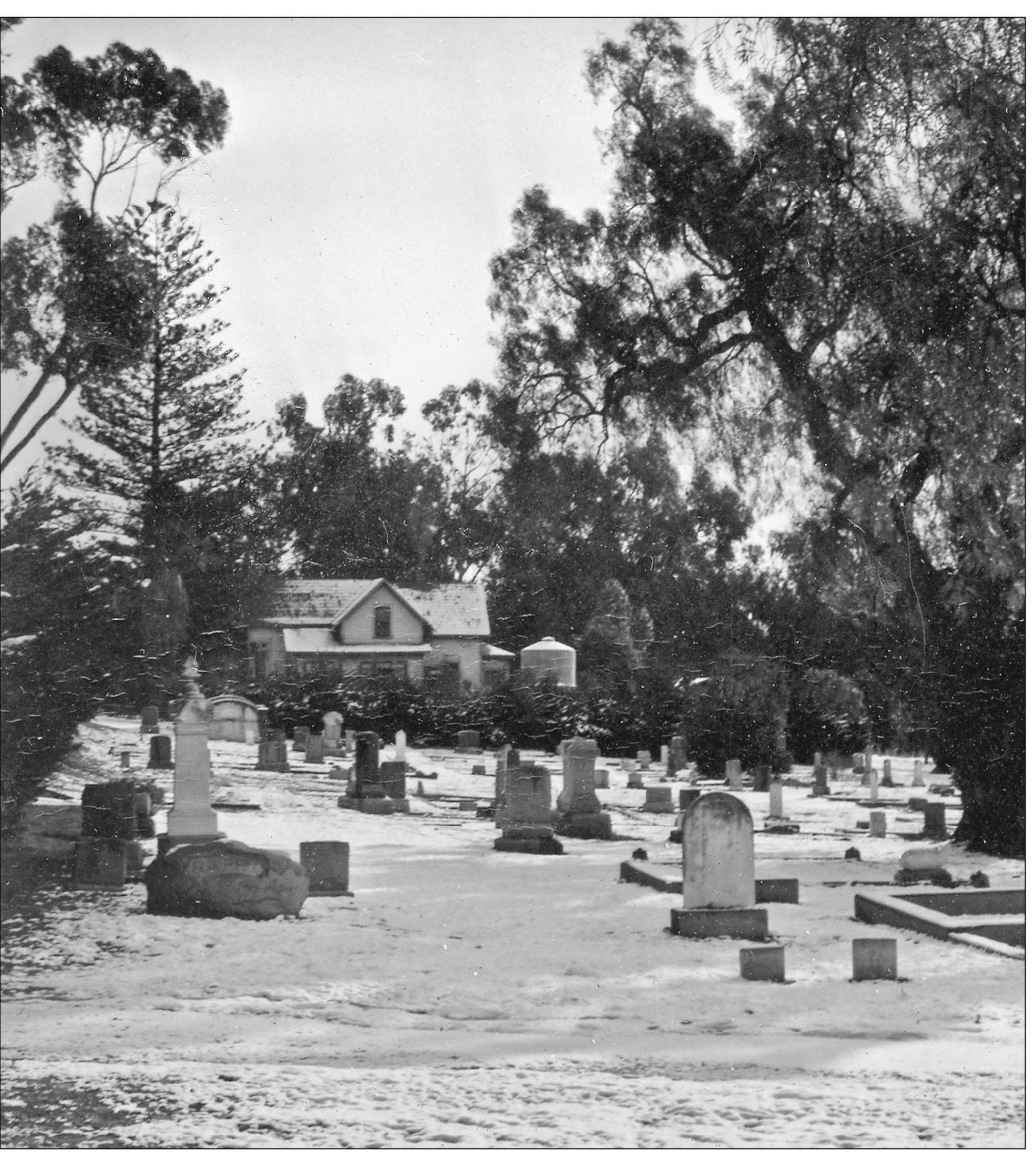
The old cemetery was two blocks long, roughly seven acres, and was outside the city limits, as required by law. The Catholic church obtained 3.69 acres in 1862 and named it St. Mary’s. Then in 1870, the First Presbyterian Church was granted 3.4 acres for use as a “public” cemetery. In 1876, a small section of that was granted to the Hebrew Society. Many of Ventura’s founding fathers and early pioneers were interred in the cemetery. Residents such as Olivas, Mills, Foster,
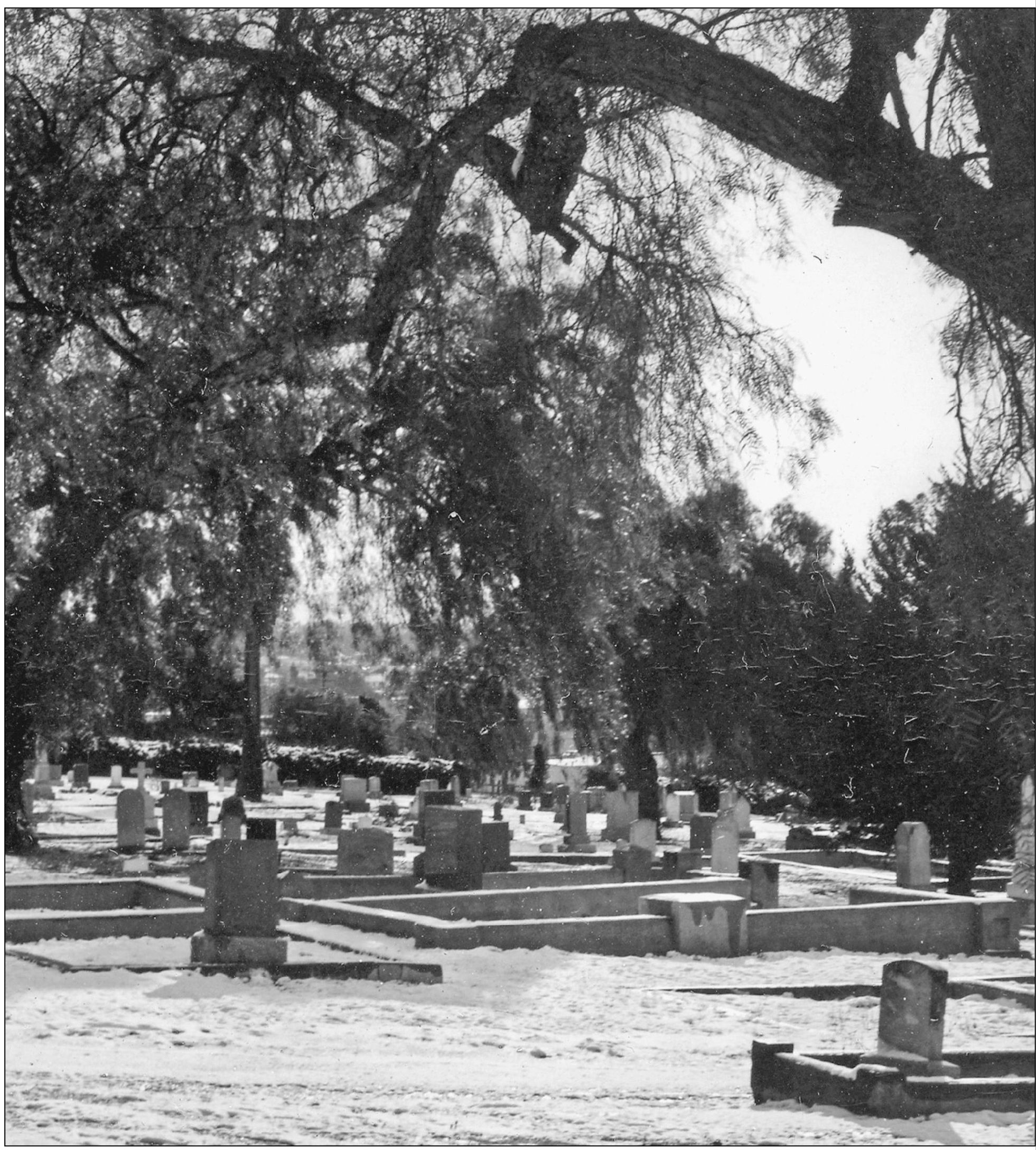
Brewster, Vandever, Obiols, Nidefer, Hobson, and Kelsey—all part of Ventura’s history—were laid to rest there. By 1912, the cemetery was reportedly filled to capacity although a few burials still took place. The cobblestone wall was built in 1934. The photograph here was taken in January 1949 during the “big snow” and provides an interesting contrast of snowflakes and headstones. (Courtesy Paul Wilvert.)
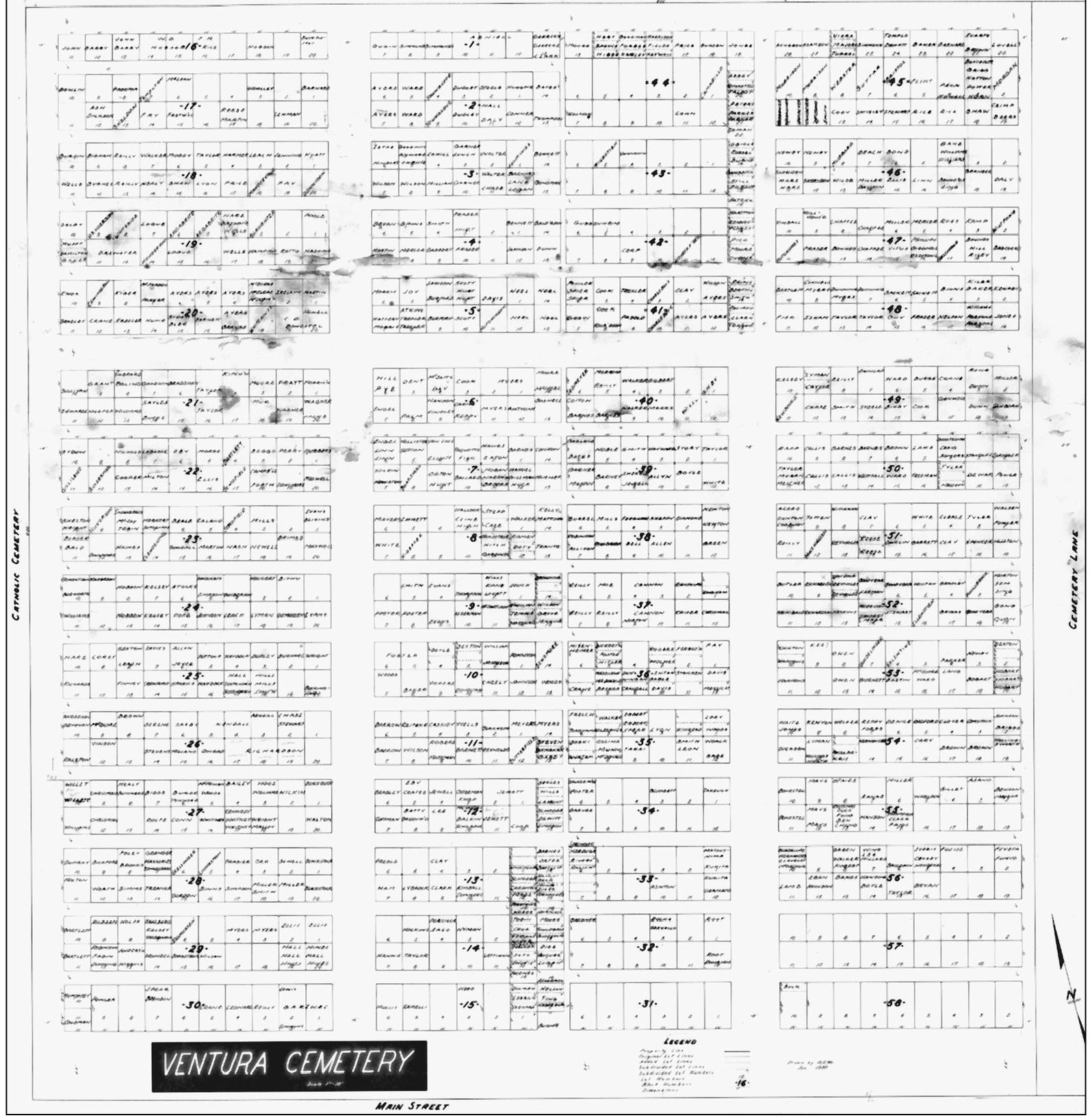
This is a city cemetery plot map produced by the City of San Buenaventura in 1938. The Catholic Cemetery is not included in this map. As many as 2,000 people are buried in the “park.” (Courtesy City of San Buenaventura.)

In 1917, Ivy Lawn Cemetery opened, again outside the “city” limits. Cemetery Park slowly began to deteriorate and as more houses engulfed it, residents began to complain about the “old eyesore.” In 1949, to appease the neighbors, the city planted hedges to hide it from view. At one time, a proposal was on the books to completely raze the cemetery for “use as a park” or housing tract—both rejected. By the early 1960s, with the vandalism increasing, the city again pursued the idea of putting in a park, and this time it passed. (Above courtesy Dena Mercer; below courtesy Paul Wilvert.)
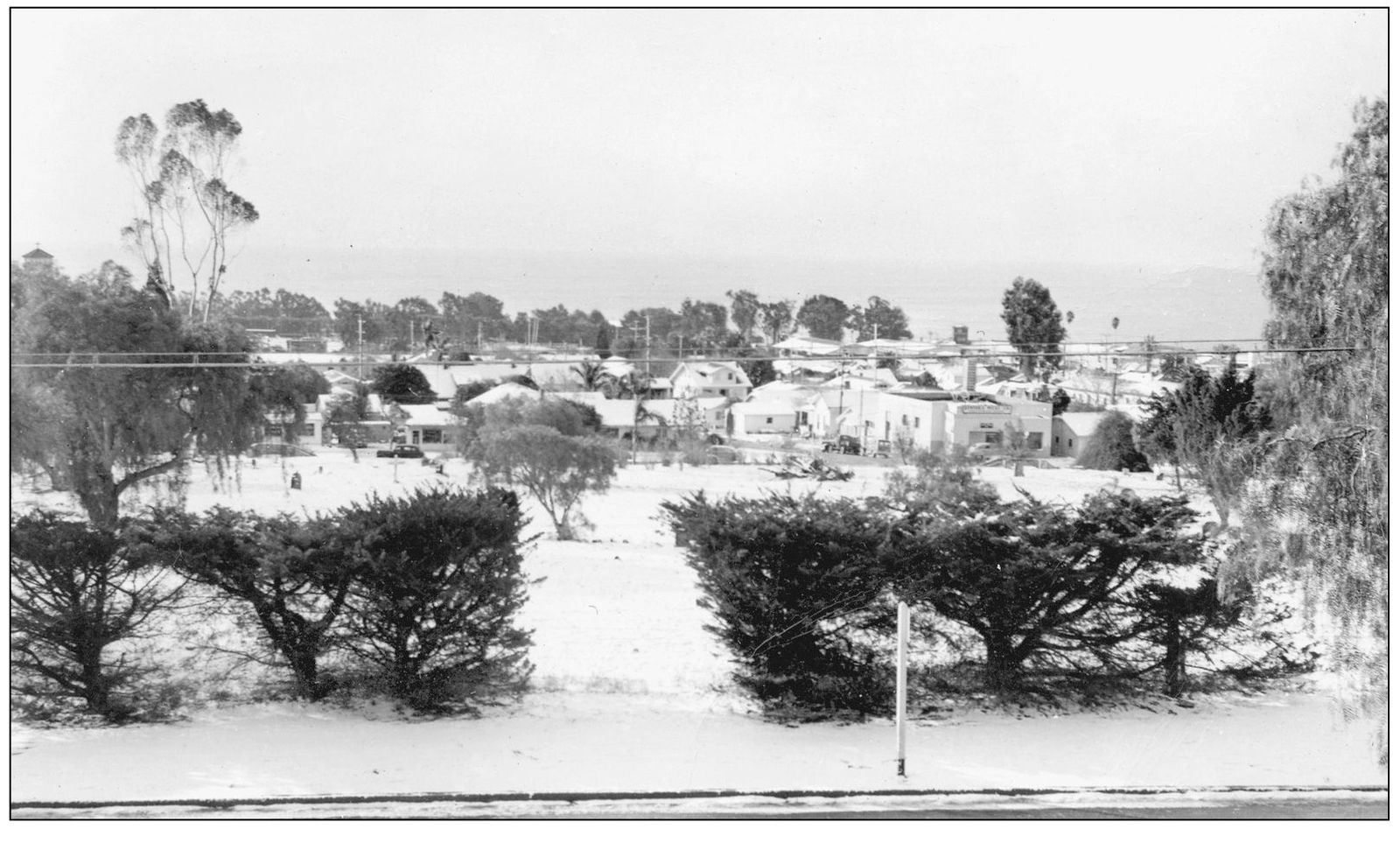

Letters were sent to approximately 200 families outlining the plan and the timeline for disinterment and reinterment at Ivy Lawn, where the headstones and markers would be moved to for pick up by family members. Now the controversy begins. The headstones ultimately were stored in Hall Canyon, where they were abandoned. Many were dumped in the canyon or ground up for use as fill for the levees. Then the headstones began popping up in unusual places. It seems people would go up the canyon and retrieve the headstones, and as a recent newspaper stated, they have been discovered in garages, patios, backyards, and in the early 1990s, one even washed ashore, which was reclaimed by the family. The controversy continues to this day, with some arguing for full restoration of the cemetery, for the city to honor those 2,000 still buried in Memorial Park with a monument, or for all those “wandering” headstones out there to be returned and set up in a special area. One thing is for sure, it is time to let the dead rest in peace. (Courtesy Paul Wilvert.)
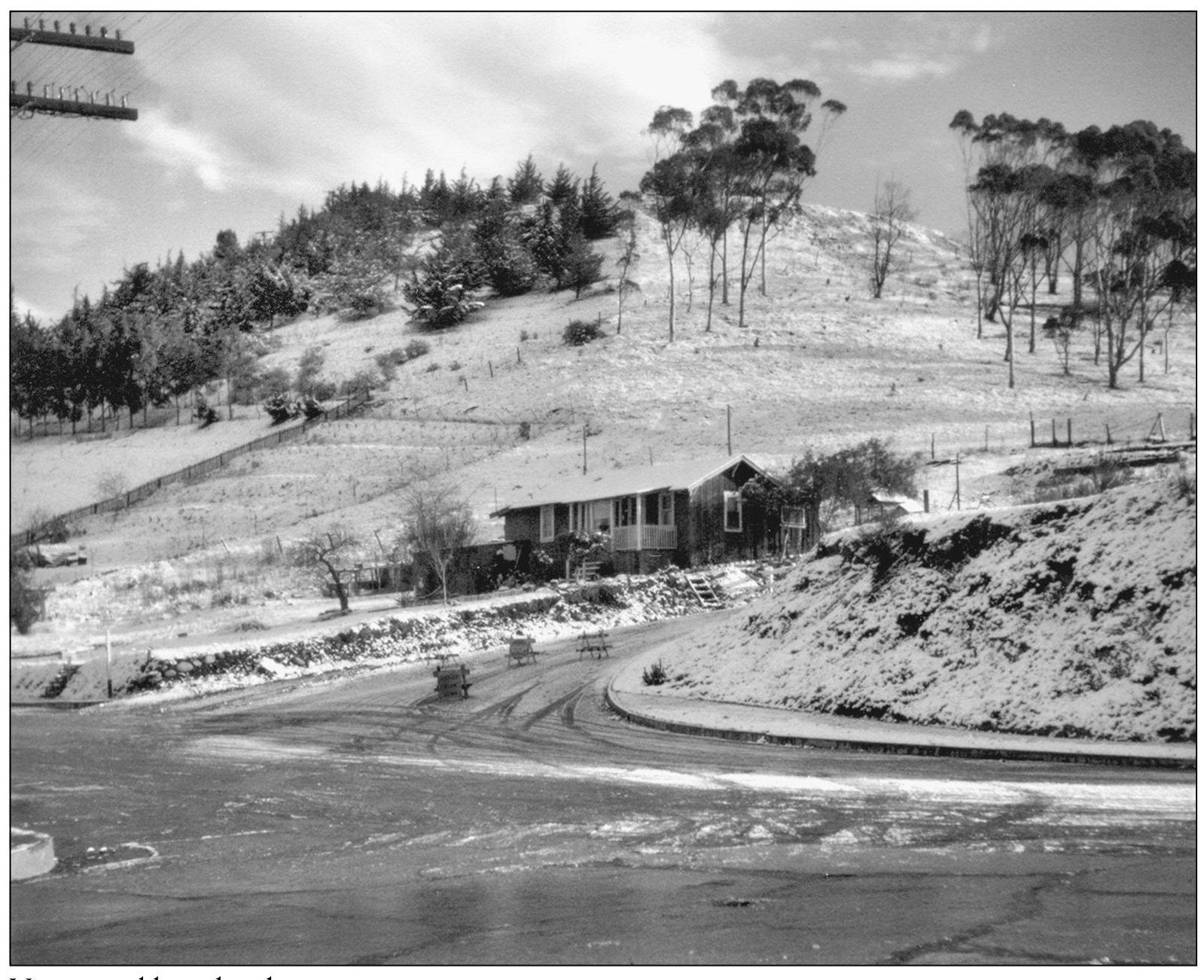
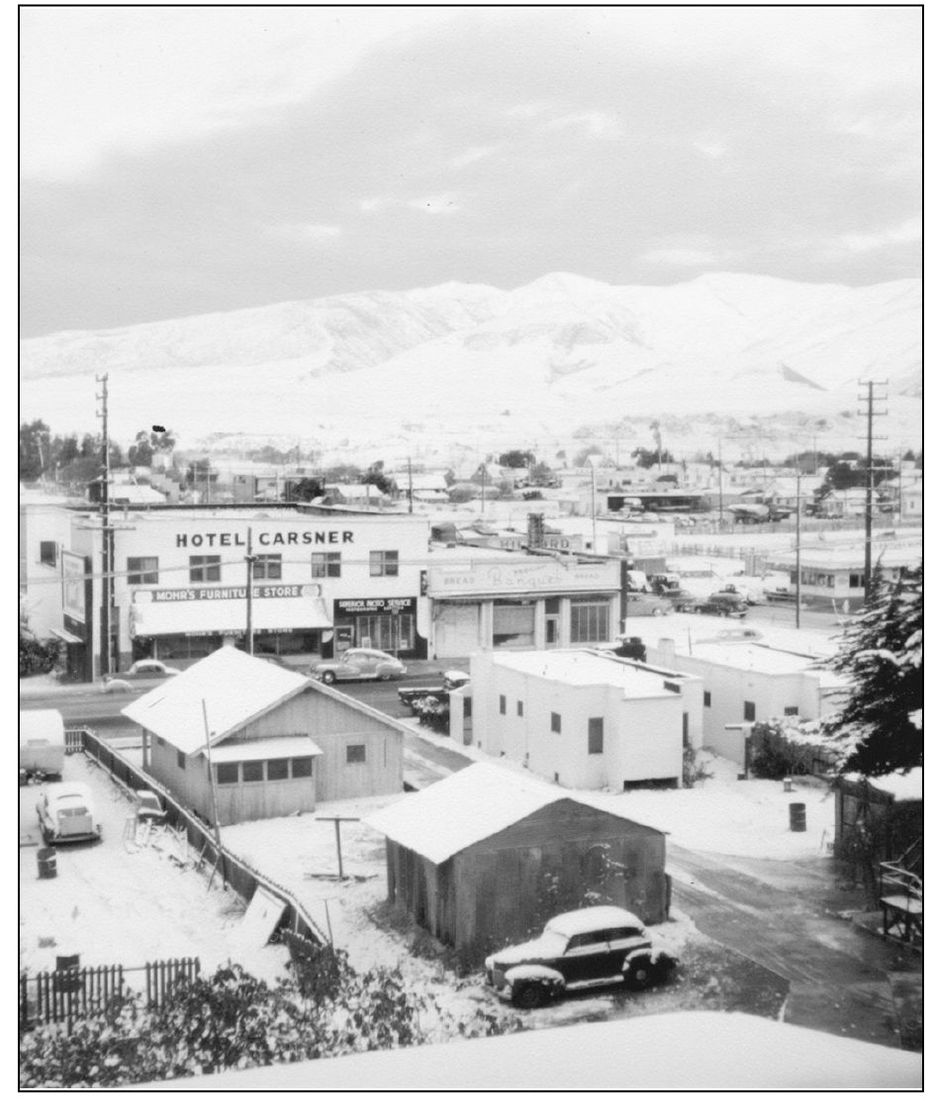
Ventura is blessed with a Mediterranean climate and never experiences overly cold or overly hot weather, but there are exceptions. In January 1949, the temperature took a sudden dip and the county experienced freezing temperatures—very bad for the agriculturally based area. Imagine everyone’s surprise on January 10 when residents woke to snow blanketing Ventura. And it appears that it was not just a light sprinkle. Snow covered the Taylor Ranch, as seen in the bottom photograph, and the top photograph shows the intersection of Cedar and Poli Streets with a coating of snow on the hillsides. Flurries covered Ventura Avenue, and even the shoreline along the ocean, the pier, and the islands were white. It still snows in the upper elevations of the county, but Ventura has not seen snow since those three days in January 1949. (Both courtesy Craig Held.)

The E. P. Foster Library grounds were covered in snow, much to the delight of local kids. Constructed in 1921, the library was a gift to the city from the E. P. Foster family. The fountain that Mr. Foster built himself has a twin at the old Foster home on Ventura Avenue. The brick building is still visible as the backside of the modern library addition that was added to the front in 1959. (Courtesy James Capito.)
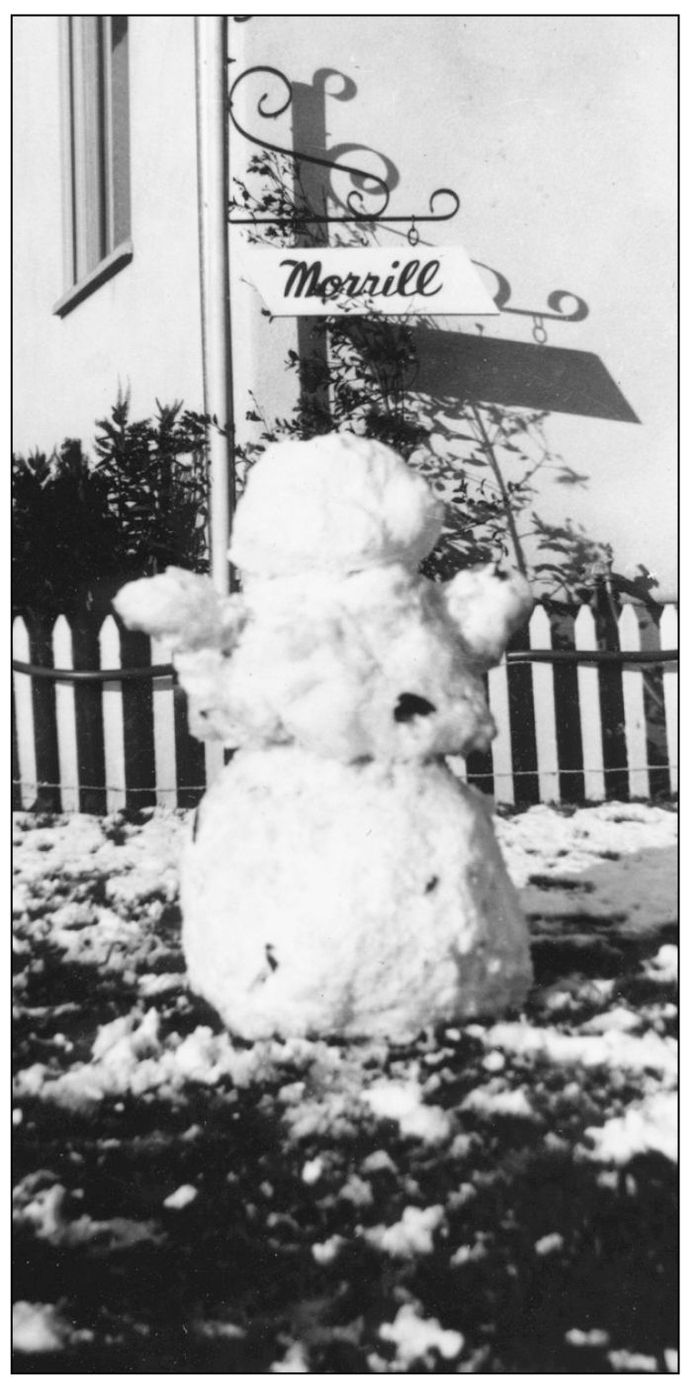
Enough snow fell that this little snowman was built and graced the front yard of the Morrill family in Montalvo. (Courtesy Dena Mercer.)